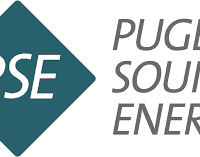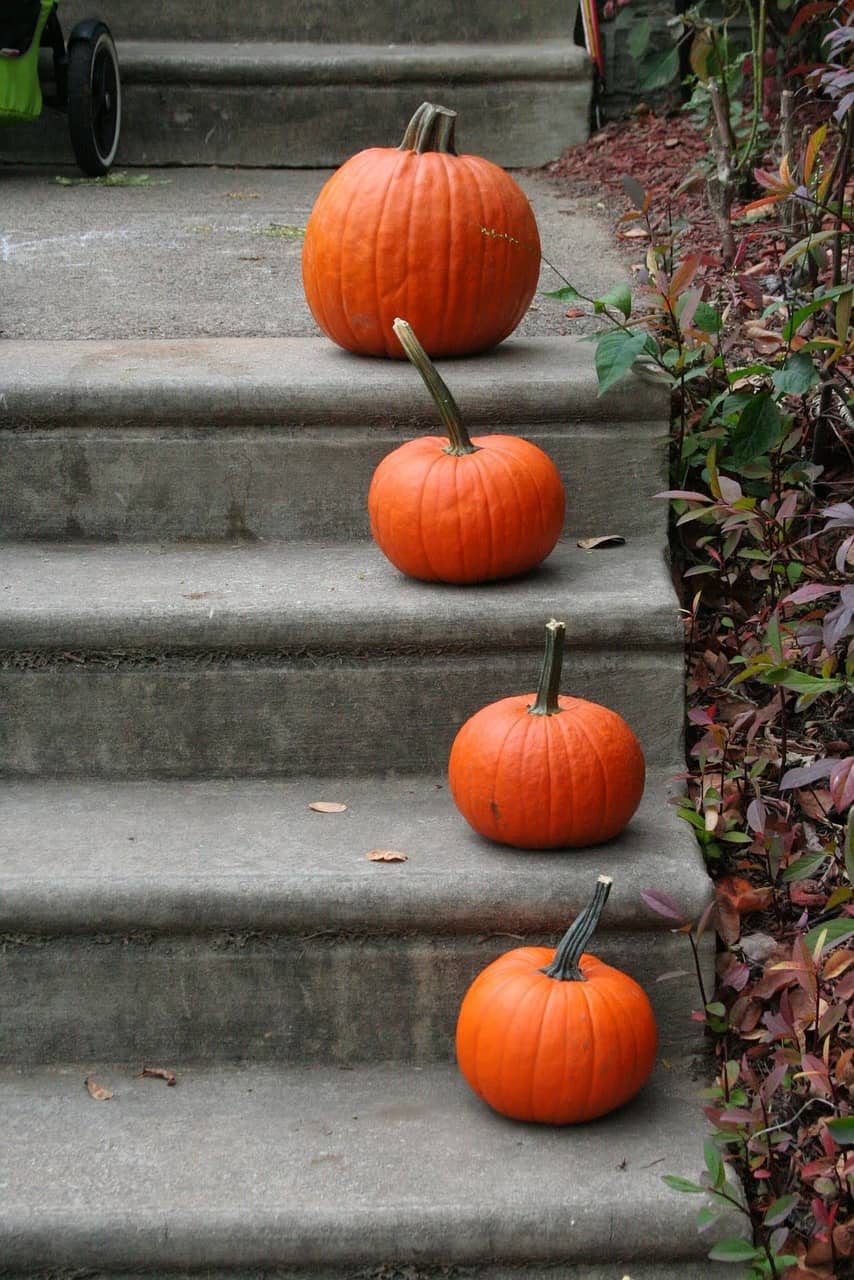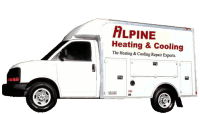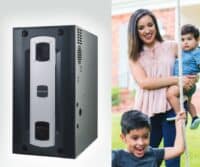
Mini-split air conditioning systems are a fantastic way to efficiently cool or heat your space. However, like any mechanical system, they can sometimes encounter issues that hinder their performance. Let’s explore common reasons why your mini-split might not be working and provide troubleshooting steps to help you identify and possibly resolve the problem before our Skagit Valley winter arrives.

Power Supply Issues
The first step in troubleshooting a non-functional mini-split is to check the power supply. Ensure that the unit is properly plugged in and that the circuit breaker hasn’t tripped. It’s also worth inspecting the remote control’s batteries, as they might need to be replaced.
Faulty Remote Control
If the remote control isn’t communicating with the mini-split, it can result in a lack of response. Make sure there are no obstructions between the remote and the unit and that you’re within a reasonable range for the remote to function.
Improper Settings
Sometimes, the settings on the remote control may not be configured correctly. Verify that the mode (cooling, heating, fan only) and temperature settings are appropriate for your comfort needs.
Air Filter Blockage
A clogged air filter can significantly reduce the efficiency of your mini-split. Check and clean the air filter regularly, as it can accumulate dust and debris over time.
Refrigerant Leaks
Low refrigerant levels can lead to poor cooling or heating performance. If you suspect a refrigerant leak, it’s essential to contact a professional technician to diagnose and fix the issue.
Sensor Problems
Mini-splits rely on sensors to regulate temperature and humidity levels. If these sensors are malfunctioning or obstructed, it can lead to incorrect readings and an inefficient system. Ensure that there are no obstructions around the unit that could affect sensor function.
Condensate Drainage Issues
A clogged condensate drain can result in water leakage, which may trigger safety features that shut down the system. Regularly check and clean the drain line to prevent blockages.
Compressor Problems
The compressor is a crucial component responsible for circulating refrigerant and maintaining the desired temperature. If the compressor is faulty, it may not be able to perform its function effectively. This is a complex issue best handled by a professional technician.
Tripped Safety Features
Mini-splits are equipped with various safety features to protect the system from damage. If any of these features are triggered, it can result in a shutdown. Some common safety features include high-pressure switches and thermal overload protection.
While mini-splits are reliable and efficient, they can encounter problems from time to time. By following these troubleshooting steps, you can identify and possibly resolve issues that might be preventing your mini-split from working effectively. However, if you’re unable to diagnose or fix the problem on your own, it’s crucial to seek the assistance of a qualified HVAC technician. Remember, safety should always be a priority when dealing with any electrical or HVAC equipment.

As the leaves turn golden and the air grows crisper in Skagit Valley, there’s nothing quite like the feeling of coziness that autumn brings. While you may be busy decorating your home, sipping on pumpkin spice lattes, and planning your next hayride in the Valley, it’s crucial not to forget about your HVAC system. As temperatures start to drop, ensuring your heating system is in top-notch condition with expert HVAC technicians becomes paramount.
Preparing for the Chill
Fall is the perfect time to give your HVAC system the attention it deserves. Our expert technicians are equipped to perform comprehensive maintenance checks, ensuring your system runs efficiently and effectively. From inspecting the ductwork to cleaning or replacing air filters, we leave no stone unturned.

Maximizing Energy Efficiency
As the days get shorter and the nights longer, your HVAC system will work overtime to keep you comfortable. Our professional services can help optimize your system’s energy efficiency, saving you money on your energy bills while reducing your environmental footprint.
Furnace Installation and Upgrades
If your existing furnace shows signs of wear and tear, it might be time for an upgrade. Our seasoned technicians can guide you through selecting a new, energy-efficient furnace that suits your comfort needs and budget.
Safety First
With the onset of cooler weather, ensuring that your heating system is safe to use is crucial. Our technicians are trained to detect and address potential safety hazards, such as gas leaks or faulty electrical connections, providing you with peace of mind.
Smart Thermostat Installation
Embrace the latest technology this fall by installing a smart thermostat. These innovative devices allow you to remotely control your home’s temperature, ensuring you return to a warm and inviting environment, even on the chilliest of evenings.
At Alpine Heating and Cooling, our expert HVAC team is dedicated to keeping your home cozy and comfortable throughout the fall season. Our experienced technicians are here to provide you with top-tier HVAC services, from routine maintenance to full system installations. Don’t wait until the cold weather sets in – schedule your appointment today with our expert HVAC team and let us help you make this fall your coziest yet!

As the leaves start to change and the air turns crisper, fall brings with it the promise of cozy evenings and warm beverages. It’s also the perfect time to consider upgrading your home’s heating system by installing a new heat pump.

Optimal Testing Conditions
Fall offers the ideal environment for testing and installing a new heat pump. The moderate temperatures provide a controlled setting for technicians to assess and fine-tune your system. This ensures that when winter arrives, your heat pump will be running at peak efficiency, providing consistent comfort without unexpected hiccups.
Energy Efficiency for All Seasons
Heat pumps aren’t just for heating; they also provide efficient cooling during warmer months. By installing a new heat pump in the fall, you’re preparing your home to handle the full spectrum of weather conditions. This dual functionality ensures that you get the most out of your investment year-round, ultimately leading to lower energy bills and reduced environmental impact.
Take Advantage of Off-Peak Seasons
Fall is traditionally considered an off-peak season for HVAC installations. This means you’re likely to find more flexible scheduling options and potentially even lower installation costs. By acting proactively in the fall, you can avoid the rush that often accompanies late winter or early spring installations.
Extend the Lifespan of Your System
Replacing your heat pump before it fails can save you from potential headaches in the middle of winter. Older systems tend to struggle as they age, resulting in uneven heating and cooling, higher energy bills, and costly repairs. Installing a new heat pump in the fall ensures you start the season with a reliable, well-functioning system, helping to extend its lifespan and reduce long-term maintenance costs.
Environmental Benefits
Heat pumps are renowned for their energy efficiency and low environmental impact. By upgrading to a new, high-efficiency model, you’re not only reducing your carbon footprint but also contributing to a more sustainable future. Additionally, many modern heat pumps use eco-friendly refrigerants that have a lower global warming potential, further enhancing their environmental credentials.
Access to the Latest Technology
The technology behind heat pumps is continually evolving. By installing a new system in the fall, you gain access to the latest advancements in efficiency, comfort, and smart-home integration. These features can enhance your overall living experience and ensure your home is equipped with the best tools to keep you comfortable.
Embracing the fall season by installing a new heat pump is a decision that brings numerous benefits to your home and your wallet. From optimal testing conditions to energy efficiency for all seasons, the advantages are clear. Don’t wait until winter is knocking at your door; take advantage of this opportune moment to upgrade your heating and cooling system. Invest in your comfort, your home’s efficiency, and a greener future today!

Go Electric with PSE. Active PSE natural gas customers can receive a FREE home electrification assessment that includes: An energy-saving home improvement plan with guidance on how to go electric $50 gift card for participating and up to $50 for referring others ($25 per referral; up to 2).
What are the benefits?
A home electrification assessment can help you plan for energy-saving home improvements and create a roadmap for switching to an electric lifestyle (home heating, electric vehicle charging, solar, and more). The post-assessment report will also include suggested resources such as utility rebates, and incentives from local, state and federal agencies. While in the comfort of your own home, you and your Electrification Coach will complete the home electrification assessment in approximately 60 minutes.


As the vibrant colors of summer begin to fade, it’s time to transition your home to embrace the coziness and warmth of fall. By taking some proactive steps now, you can ensure your space is not only comfortable but also ready to face the colder months ahead. Make your home maintenance fall checklist, and contact us to help with servicing your heating system!
Inspect and Clean Gutters
Fallen leaves and debris can quickly clog up your gutters, potentially leading to water damage and leaks. Make sure to clean them out and ensure they’re in good condition before the rainy season arrives.
Check for Drafts
Inspect windows and doors for any gaps or cracks that may allow cold air to seep in. Seal these areas with weatherstripping or caulk to keep your home warm and energy-efficient.
Service Your Heating System
Before the temperatures drop significantly, have a professional service your heating system. This ensures it’s running efficiently and reduces the risk of any unexpected breakdowns during the colder months.
Clean and Inspect Your Fireplace or Heating Appliance
If you have a fireplace, wood stove, or any other heating appliance, ensure it’s clean and in good working order. Have the chimney inspected and cleaned to prevent potential fire hazards.
Test Smoke and Carbon Monoxide Detectors
Fall is a great time to check the batteries in your smoke and carbon monoxide detectors. Replace them if needed and ensure these life-saving devices are in working condition.
Switch to Heavy-Duty Bedding
Swap out lightweight summer bedding for warmer, cozier options. Consider adding extra blankets or a duvet to your bed for extra warmth during chilly nights.
Insulate Pipes
Prevent frozen pipes by insulating them in areas that are susceptible to cold, such as basements, attics, and crawl spaces. This simple step can save you from a major headache later on.
Clean and Store Outdoor Furniture
Protect your outdoor furniture from the elements by cleaning it thoroughly and storing it in a sheltered area, like a garage or shed. If you don’t have space, invest in high-quality covers.
Fertilize Your Lawn and Garden
Autumn is an important time to nourish your lawn and garden for healthy growth in the spring. Apply a balanced fertilizer to promote root development and prepare plants for the winter months.
Decorate for Fall
Embrace the spirit of the season by adding fall-themed decor to your home. Consider incorporating warm colors, cozy textiles, and seasonal accents like pumpkins, gourds, and wreaths.
By following this fall home maintenance checklist, you’ll create a cozy and inviting atmosphere in your home and ensure it’s well-prepared to face the challenges that fall may bring. Taking these proactive steps now will help you enjoy the beauty of autumn without any unexpected surprises. Happy fall decorating!


While our attention is focused on the spread of Coronavirus, and we are thinking about the necessary precautions that are needed to reduce our chances of coming in contact with this virus, HVAC professionals know that Coronavirus is not the only disease, germ, virus, or pollutant we need to combat in our homes. We also need to consider the other viruses and germs that are spread through a central HVAC system. People spend about 90% of their lives indoors, and pollutant levels can be as high as 100 times the levels encountered  outside. The Environmental Protection Agency (EPA) ranks indoor air pollution among the top four environmental hazards in America. One-way people can be proactive and protect themselves from getting sick in general is by being educated on Indoor Air Quality (IAQ).
outside. The Environmental Protection Agency (EPA) ranks indoor air pollution among the top four environmental hazards in America. One-way people can be proactive and protect themselves from getting sick in general is by being educated on Indoor Air Quality (IAQ).
There are four particular groups (although all people could benefit) that need the best possible air quality in the home:
- Infants to 16-years-old
- Adults, age 60 plus
- No age restriction – immune-compromised individuals, pregnant women, and persons with chronic respiratory disorders, and those recovering from surgical procedures or illness
- Pet owners with domestic animals – dogs, cats, and birds
Scientist believes the principal transmission mode of the Coronavirus is by respiratory droplets, which may travel several  feet from someone who is coughing or sneezing. Covering your mouth when you cough or sneeze is the first step to control the spread. However, residual contaminants can travel through your HVAC system, where all air in the home is circulated and can contribute to the spread of an airborne virus. The Coronavirus has the same traits as other viruses such as the common cold, the flu, and a sore throat, by how it is spread from person-to-person.
feet from someone who is coughing or sneezing. Covering your mouth when you cough or sneeze is the first step to control the spread. However, residual contaminants can travel through your HVAC system, where all air in the home is circulated and can contribute to the spread of an airborne virus. The Coronavirus has the same traits as other viruses such as the common cold, the flu, and a sore throat, by how it is spread from person-to-person.
Source control is always the first step when dealing with IAQ concerns such as mold, dust, odor, and even viruses. There are many remedies when it comes to managing IAQ in a home. Some products range from a higher Minimum Efficiency Reporting Value (MERV) rated filter, electronic air cleaners, and ultra-violet sterilization systems. The HVAC system and duct system can contribute to spreading unwanted pathogens in the air, not because your system came contaminated from the factory, but because the air in your home became contaminated.
Tiny pathogens spread in the air can be fungi, bacteria, or viruses. The difference between a virus and bacteria is viruses are much smaller than bacteria, and viruses cannot survive without a host. According to the Mayo Clinic, fewer than 1% of bacteria cause disease in people.
In addition to spreading viruses through an HVAC system, another nemesis is mold, a biological growth. Mold is, in the  simplest terms, part of the “dust to dust” program. Everything living will die, it will return to the food chain, whether it’s a mighty oak tree, your favorite leather shoes (once upon a time, a cow), or that forgotten orange in the back of the refrigerator.
simplest terms, part of the “dust to dust” program. Everything living will die, it will return to the food chain, whether it’s a mighty oak tree, your favorite leather shoes (once upon a time, a cow), or that forgotten orange in the back of the refrigerator.
Your HVAC system can provide biological growth the perfect opportunity to form and grow. There are three things needed to support biological growth. Food is the number one source of supporting biological growth. One example of food sources is skin cells that have flaked off and floated into the HVAC system. The next item to support organic growth is moisture. Once those skin cells made it through the system, they can become attached to the evaporator coil or blower motor. When the coil starts to produce condensation along with the food source, it becomes the perfect recipe for biological growth. The final item to contribute to organic growth is the absence of ultraviolet light. HVAC professionals and homeowners who manage these factors, reduce the risk of biological growth.
To set the record straight:
- Mold and viruses are not a factory option
- AC units do not create mold or viruses
- If you have mold or viruses, it is your mold and viruses
- An ultra-violet system will not keep your home mold or virus-free
When an ultra-violet system is used correctly and installed to the manufacture’s guidelines, it can prove to be a useful tool. Ultra-violet exists in natural sunlight (it’s why we wear sunscreen, and mold grows under a rock), it disassembles the DNA of organics. It reduces them to nitrogen and oxygen. Ultra-violet is most effective as surface irradiation (with a limited “kill zone”) and is used in many applications. It is used to sterilize medical instruments, clean reclaimed water in treatment plants, saltwater aquariums, and is used in food processing.
Contractors should educate customers on the value of IAQ and provide solutions and options to help the homeowner make educated decisions. An HVAC system should be inspected at a minimum, twice a year. Visit The National Air Duct Cleaners Association for recommendations on HVAC system cleaning. Be sure to ask your HVAC technician on products that can help you breath cleaner, fresher, healthier air.
In times like these, when emotions run high, and everyone is concerned about the unknown, HVAC professionals need to shine as a beacon of truth and good faith. Quality maintenance, good hygiene, and proven best practices such as; improved indoor air quality, source control for contamination, and keeping a clean house are the keys to successfully navigating current health issues.
By: Matt Akins, ACCA Manager of HVACR Education
ACCA is a non-profit association serving more than 60,000 professionals and 4,000 businesses in the indoor environment and energy services community. Our member firms are the nation’s most professional contracting businesses, serving residential and commercial customers in every state. With roots stretching back a century, ACCA was incorporated in its present form nearly 50 years ago. Today, ACCA sets the standards for quality comfort systems, provides leading-edge education for contractors and their employees, and fights for the interests of professional contractors throughout the nation. Learn more about ACCA here.
Reference Sources
https://www.epa.gov/report-environment/indoor-air-quality
https://www.cdc.gov/mmwr/volumes/69/wr/mm6908e1.htm






